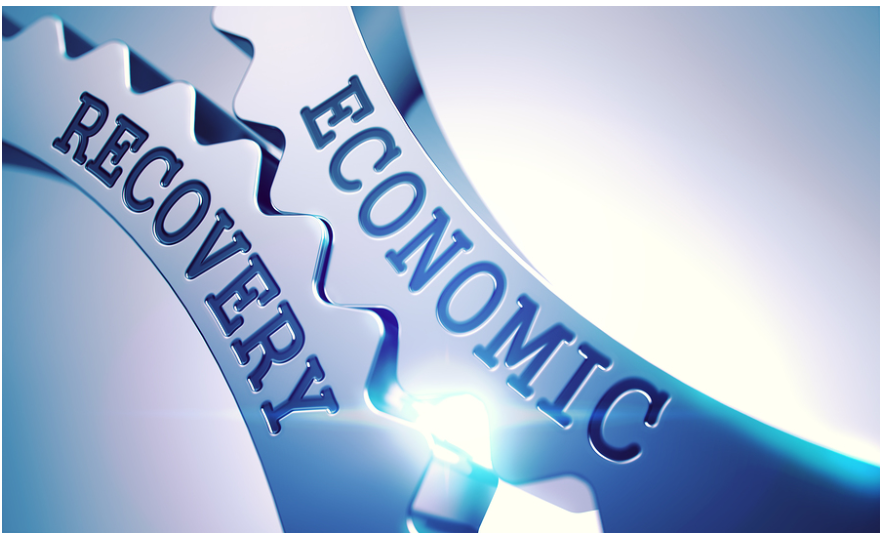ABN Amro har analyseret de asiatiske landes udviklingen under coronakrisen og konkluderer, at Asien er godt på vej op fra undergrunden – en markant forskel på Europa og USA. For dette år bliver der et beskedent fald i den økonomiske vækst på 1 pct. eller en beskeden stigning på 1 pct – efterfulgt af en stigning næste år på 7-7,5 pct. Kun tre asiatiske lande vil med sikkerhed få vækst i år: Kina, Taiwan og Vietnam. Overalt er der en stigning i udenrigshandelen.
Emerging Asia Watch – Crawling out of the abyss
- PMIs, foreign trade and capital flow data indicate that recovery from covid-19 collapse has started
- Post covid-19 shock, we expect regional GDP to contract by ± 1% in 2020 and grow by 7.5% in 2021
- North Asia is doing better than South Asia in terms of containing the virus and the economic damage
- China, Taiwan and Vietnam are the only three countries with positive annual growth this year
200903-Asia-Watch.pdf (234 KB)
A regional contraction in 1H 2020 on covid-19, with North East Asia performing better than South Asia
The covid-19 shock had a huge impact on growth in emerging Asia in the first half of this year. Following the imposition of lockdowns and other safety restrictions, EM Asian countries had to deal with domestic covid-19 related supply and demand shocks, the drying up of tourist revenues and/or all kinds of supply chain distortions.
The export oriented region also felt the impact of the collapse in global growth and trade. For commodity exporters, such as Indonesia or Malaysia, the drop in commodity prices formed an additional drag.
As a result, we have cut our regional growth forecasts in the course of this year sharply. That is particularly true for India that was faced with a lengthy but ineffective lockdown, with a stunning 23% yoy GDP contraction in Q2. But we also have cut our forecasts sharply for tourist destinations Thailand and Philippines, oil exporters Malaysia and Indonesia and trade hubs Singapore and Hong Kong.
Meanwhile, the impact on growth is less dramatic (but still significant) in North East Asia (China, South Korea, Taiwan) and Vietnam, as the authorities concerned had more success in getting the pandemic under control – notwithstanding the occurrence of second waves in China and South Korea.
China, Taiwan and Vietnam are the only three countries for which we expect positive annual growth this year.
We expect ±1% contraction of regional GDP this year, followed by almost 7.5% growth in 2021
After EM Asia grew by around 6% in 2018 and 5% in 2019, following the covid-19 shock we expect a contraction of regional real GDP this year, by a bit more than 1%.
We expect growth to re-accelerate in 2021, to an above trend pace of 7-7.5%. Next year’s re-acceleration is mainly driven by base effects, as the covid-19 driven collapse in the first half of this year will gradually fade out of the figures by then.
All this implies that despite the collapse in regional growth in the first half of this year, emerging Asia will remain a relative ‘outperformer’ versus other regions. That partly stems from its generally prudent policies and the availability of ‘buffers’ that create room for fiscal and monetary easing in challenging times.
That said, we expect emerging Asia to have lost a bit more than 5% of GDP compared to our pre-corona base case by end 2021.
Foreign trade starts recovering from the covid-19 shock
Just as the eurozone, emerging Asia is a very exported oriented region, and is therefore highly exposed to the global business cycle. The covid-19 shock to global trade therefore also has a clear impact on emerging Asian exports, while vice versa the shock to domestic demand also had a clear impact on regional imports.
That said, the collapse in EM Asian exports was not as bad as the global average and so far less deep and more short-lived as during the global financial crisis. This ‘outperformance’ is likely in part due to the fact that the region is relatively well positioned in technologic supply chains, with the tech sector being one of the ‘winners’ from the covid-19 shock.
China did even better than the regional and the world average, with export volumes being supported by medical (and tech) goods (see for more background here).
The improvement in foreign trade momentum is also visible in Asian export PMIs, which have started a comeback from the sharp decline earlier this year. The PMI export subindices for China (Caixin) and Taiwan rose to above the neutral 50 mark again in August, for the first time since the covid-19 shock.






